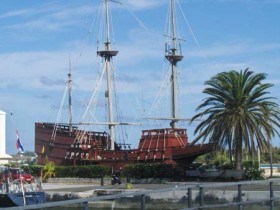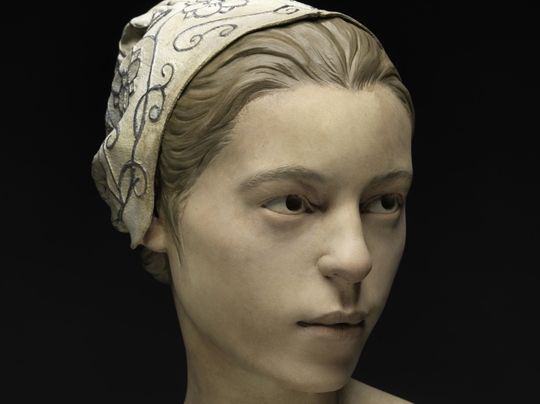Archaeologists Confirm Jamestown Cannibalism
 Archaeologists have confirmed Jamestown’s colonists resorted to cannibalism during the “starving time” winter of 1609-10 prior to the arrival of two provision-laden ships built in Bermuda by the “Sea Venture” castaways.
Archaeologists have confirmed Jamestown’s colonists resorted to cannibalism during the “starving time” winter of 1609-10 prior to the arrival of two provision-laden ships built in Bermuda by the “Sea Venture” castaways.
In a presentation at the Smithsonian’s National Museum of Natural History in Washington DC, archaeologist Doug Owsley presented the reconstructed skull of a 14-year-old English girl “Jane” discovered at the site of the Virginia fort bearing the marks of butchery.
The starving time was a period in which as many as 80 percent of the early settlers died. It has long been suspected by historians that the desperate colonists engaged in cannibalism but such speculation had never before been confirmed.
Dr. Owsley, division head for physical anthropology at the Smithsonian’s National Museum of Natural History, reported on the forensic analysis of 17th century human remains, including part of a human skull and tibia. They had been excavated by Jamestown archaeologists in 2012 as part of a 20-year excavation of James Fort.
A statement on the findings says Dr. Owsley and his “Jamestown Rediscovery Project” research team identified a number of features on the skull and tibia that indicated the individual was cannibalised.
“Four shallow chops to the forehead represent a failed first attempt to open the skull. The back of the head was then struck by a series of deep, forceful chops from a small hatchet or cleaver. The final blow split the cranium open. Sharp cuts and punctures mark the sides and bottom of the mandible, reflecting efforts to remove tissue from the face and throat using a knife,” the statement says.
George Percy, one of Jamestown’s early leaders, in about 1625 provided what is probably the best-known and most gruesome account of the “starving time.”
He described hunger-crazed colonists digging up the dead, and one man who supposedly killed, “salted” and carved up his pregnant wife for food. By March, 1610, more than half — by some accounts, 80 percent — of the Virginia settlers had died.
Facial reconstruction of cannibal victim “Jane” for the Smithsonian’s “Jamestown Rediscovery Project”
In July, 1609 while en route to Jamestown — England’s earliest permanent settlement in America — the “Sea Venture” was separated from the rest of a relief fleet during a hurricane and was deliberately driven on to Bermuda’s reefs by Admiral Sir George Somers in order to prevent the ship from foundering. This allowed all 150 people aboard, and one dog, to be landed safely ashore.
The “Sea Venture” party was stranded on Bermuda for approximately nine months. During that time, they built two new ships, the pinnaces “Deliverance” [the modern reproduction in St. George's is pictured at top] and “Patience”, from Bermuda cedar and parts salvaged from the “Sea Venture”, especially her rigging.
The Bermuda-built ships arrived in Jamestown on May 23, 1610 to find only 60 survivors of the 500 settlers who had preceded them. Many of these survivors were themselves near death, and Jamestown was judged to be unviable.
Everyone was boarded onto the “Deliverance” and “Patience”, which set sail for England. However, on June 10, 1610, the timely arrival of another relief fleet, bearing Governor Baron De La Warre — who would eventually give his name to the colony of Delaware — which met the two ships as they descended the James River, granting Jamestown a reprieve..
American historian Lorri Glover — co-author of “The Shipwreck That Saved Jamestown: The Sea Venture Castaways and the Fate of America” — recently spoke about the accidental settlement of Bermuda in 1609 and the role its survivors played in the eventual rescue of the failing Jamestown colony at Kentucky’s McConnell Center.
In the 2008 book, Dr. Glover and co-author Daniel Blake Smith made a forceful case that the “Sea Venture” bears no small part in the ultimate survival of English colonisation in America in their account of shipwreck, courage, mutiny and deliverance .
Dr. Glover teaches American history at Saint Louis University.
Dr. Glover’s McConnell Center Lecture “Faith, Fortune and the Founding of English America”



Comments (2)
Trackback URL | Comments RSS Feed
Articles that link to this one: